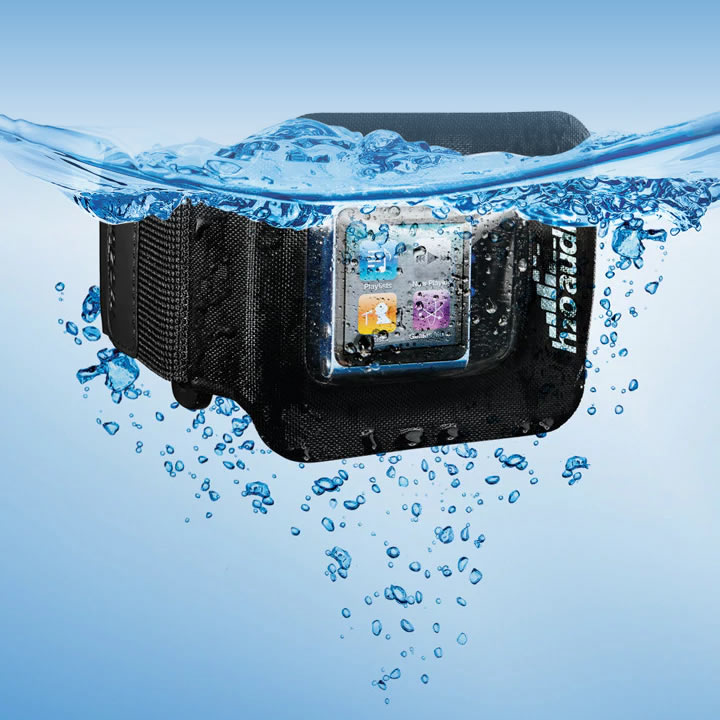Your device may be labeled “waterproof” or “water-resistant,” but you may ask what that means for the particular item in question. Where most gadgets are concerned, you may want to take the term with a grain of salt.
These features are not built to the same standard and, thus, tend to deliver their brand of waterproofing.
Navigating the different waterproofing classifications may lead to you asking questions like what is IPX rating? What is the NEMA scale? These are things to familiarize yourself with to learn if a gadget is the kind of waterproof you want it to be.
The Dangers of Unfamiliarity
The term “waterproof” generally varies from one device to another, and taking it to mean the same for all your devices may lead to the untimely demise of some.
Even in high-end phones where “water-resistant” tends to mean a sort-of immunity to brief dunking, a certain level of skepticism should remain. Yes, the term “waterproof” attached to a gadget brings a certain level of comfort, but it’s worth noting that it has specific implications for each device.
Some terms determine how waterproof a gadget is
IPX Rating
A common way of quantifying and certifying a gadget’s resilience to water exposure is to use the IPX scale or Ingress Protection rating. This is usually labeled as two numbers next to “IP.” This is based on the International Electrotechnical Commission’s scaling system.
The formula’s first number represents the device’s resistance to solid particles. The number ranges from one to six, one indicating nearly no protection, and six representing sealing tight enough to prevent dust from entering the device.
Many brands don’t usually present this number unless a model features at least a level five protection. Lack of promotion on this front means most phone designs are not tight or contain enough.
The number that comes after that represents the waterproof rating. This can be quite tricky to understand, as it can pertain to both a device’s endurance to water jets and capacity to survive submergence under varying water depths.
Some of the most common IPX ratings are 7 and 8, with the “X” coming just before the number representing the solid ingress rating. It is also worth noting that this variable pertains more to immersion than it does resistance to water jets.
For a clearer picture of what these ratings can withstand, an IPX7 can usually endure 30 minutes of submergence under one meter of water without liquid penetrating.
IPX8-rated devices, on the other hand, have a more fluctuating testing criterion where the manufacturer and certifying organization agree on the time and depth test parameters. Still, waterproof specs will differ from one device to another, and research is still crucial to determine the exact parameters a specific device falls under.
NEMA Rating
The NEMA or National Electrical Manufacturers Association is an organization in North America responsible for rating electronics based on their ability to lockout harmful materials.
However, keep in mind that the organization doesn’t do product testing; they merely provide guidelines on the protection a specific enclosure offers. These ratings are often featured in industrial equipment and not on smartphones.
Still, there are smartphones with both IP and NEMA labels.
Understanding Waterproof Language
Understanding how manufacturers describe their devices’ relationship with water can be tricky.
Generally, “waterproof” means that a brief dip in the bathtub should not phase a device. However, other classifications for water resistance, such as splash-proof and weatherproof, are also used. That can make it confusing for some to know the capacity of a specific gadget.
In the world of watches, water resistance can take a slightly different meaning. There are different levels of ingress protection for both wearable and traditional timepieces detailed by a specific guideline.
However, things work a bit differently outside that realm.
The designation for levels of water resistance isn’t as specific, and rating representation doesn’t tend to be as truthful. So while the latest iPhone may shine in different technological aspects, its waterproof feature may not match the rest of it.
You may also find it too risky to test its level of water resistance, seeing as these items come with quite a heavy price tag. Shallow or deep, you’d rather not be in a situation to test out this theory.
No matter the “waterproof” classification on your device, the general rule is it should never be submerged in the water entirely. That is unless an upgrade is in order.
Your Brand of Waterproof
The term “waterproof” should be taken with a grain of salt, as it can mean different things from one manufacturer to another and from one device to another. It should be easier to understand in wearable timepieces, but phones and similar gadgets are different.
If you’re not interested in investigating the time and depth parameters for water resistance in a specific device, abide by the general rule that devices with waterproof labels should never be submerged in the water entirely.

